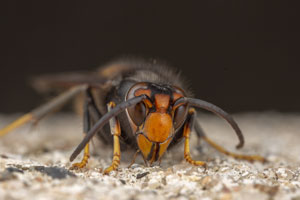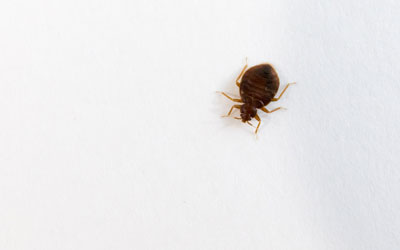 The Asian giant hornet, infamously known as the “murder hornet”, has certainly made the rounds in the media over the past couple of months. It’s easy to understand why this hornet has struck fear in the heart of so many nationwide, even though they’ve only been spotted in the Pacific Northwest (so far). Originally from Japan, China, and other Asian countries, this hornet made its first appearance in Vancouver and Washington state late last year. Their sting is known to be potentially fatal, but the true threat they pose is to the honeybee population. Keep reading to learn all you need to know about murder hornets from the team at Rentokil!
The Asian giant hornet, infamously known as the “murder hornet”, has certainly made the rounds in the media over the past couple of months. It’s easy to understand why this hornet has struck fear in the heart of so many nationwide, even though they’ve only been spotted in the Pacific Northwest (so far). Originally from Japan, China, and other Asian countries, this hornet made its first appearance in Vancouver and Washington state late last year. Their sting is known to be potentially fatal, but the true threat they pose is to the honeybee population. Keep reading to learn all you need to know about murder hornets from the team at Rentokil!
Just How Dangerous are Murder Hornets?
The main threat of these hornets is that they are a predator of the honeybee. They attack honey bee hives, killing adult bees and devouring bee larvae and pupae. A single murder hornet can kill dozens of honeybees in minutes, and a group of 30 hornets can devour a hive of nearly 30,0000 bees in hours. Needless to say, this can severely affect the honeybee population.
Besides their impact on honeybees, these hornets administer a nasty–and potentially fatal–sting. Like many stinging insects, the murder hornet will not attack humans unless they feel provoked or threatened. Their stings contain neurotoxins that, when stung multiple times, can lead to organ failure. Being stung by these hornets can lead to death. They’re responsible for the passing of up to 50 people in Japan each year.
6 Features of the Asian Giant Hornet
If you ever come across one of these infamous hornets, you’re going to be able to tell what they are by their size alone. Six traits that help identify the murder hornet include:
- Worker murder hornets are 1 ½ – 2” in length while queens can exceed 2”.
- They have a light orange head with an orange, black, and brown striped body.
- They have large, prominent eyes
- One of the more frightening features are their distinctly sharp mandibles
- These hornets possess 6 legs and a set of antennae
- Their stingers are ¼” (6 mm) in length
Have Murder Hornets Been Found in Utah or Idaho?
Thankfully, there have been no sightings of this hornet in our area as of yet. They do prefer a wet, mild climate, which is why they seem to be showing up in the Pacific Northwest. Currently, scientists are working hard to find, trap, and eradicate this pest before they spread. With any stinging insect, it’s important to always contact a licensed pest control company such as Rentokil for assistance.

 If you have had a bed bug problem before, you know how difficult they are. In addition to spreading throughout your home, these bloodsucking pests are notoriously difficult to get rid of without a professional pest control expert. With Bed Bug Awareness week upon us, now is the perfect time to learn more about the true threats of
If you have had a bed bug problem before, you know how difficult they are. In addition to spreading throughout your home, these bloodsucking pests are notoriously difficult to get rid of without a professional pest control expert. With Bed Bug Awareness week upon us, now is the perfect time to learn more about the true threats of